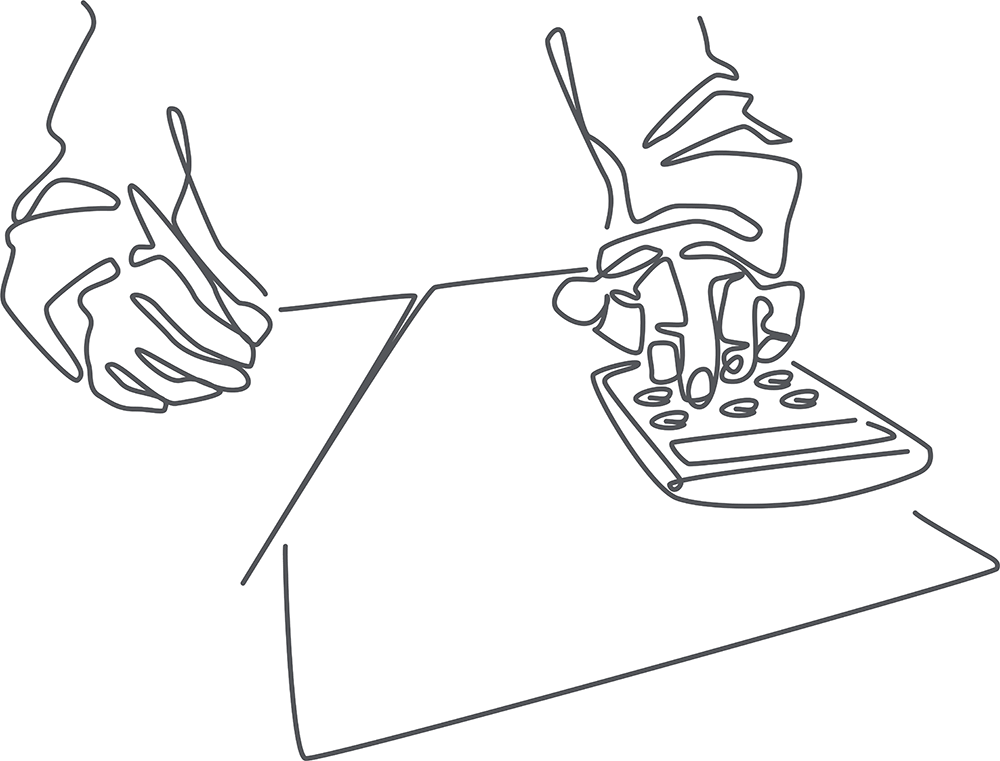Simply put, feasibility is the likelihood of achieving success. A feasibility study is a market research project where the key objective is to determine whether or not a new product or service is likely to succeed. Will it likely make a profit, or not?
A feasibility study usually involves these elements:
- Developing a clear, easy description of the concept.
- Asking prospective buyers what they think of it – through focus groups, in-depth interviews, or surveys.
- Estimating the size of the market that could buy it, and whether the demand is growing.
- Comparing it to competing products.
- Analyzing whether it would be profitable.
- Recommending whether or not it’s likely to succeed – is it a go or no-go?
If needed, there are also are other options such as beta testing and trial advertising see how much interest your concept might have. Here is an overview of what goes into these 6 main areas.
1. Developing a Clear Description
Creating a clear description of your proposed offering is sometimes a challenging endeavour. This might mean one of the following:
- Building a physical product prototype,
- Creating a graphic illustration (or even an animation or a demo) of how a new service or might work, or
- Writing a clear, non-technical description that prospects can understand, but that illustrates the reason the concept might be useful.
In some cases, putting up a simple web page may be necessary to facilitate an easy phone interview with prospects.
Making the description as clear and appealing as possible will allow for the most realistic test of what a the “real” version will be in the future once the actual version is available.
In many cases, we will also need to estimate potential price points for testing.
2. Asking Prospective Buyers
Asking prospective buyers what they think of the concept can be done in several ways:
- In-depth interviews: by sending a photo and/or posting images on a website, a phone interview can allow a clear discussion and description of the concept. This methodology has the advantage of hearing someone’s initial reaction and why they were or were not interested after hearing the description.
- Surveys: by posting the written description, larger volumes of potential buyers can be asked their initial reaction, choose from various price tiers, and even answer questions about where they would be most likely to purchase from (e.g. online, or a store, or even in what sections of a store).
- Focus Groups: having people experience the product or service in person give a more visceral experiential type of research – allowing them to evaluate the quality against the proposed price in a more meaningful way. The two-way feedback from focus-groups can also open ideas to valuable suggestions or concept modifications

3. Estimating Market Size and Trends
Once a certain type of target customer is identified as being interested, we can search to find areas where those customers live or frequent. There are vast amounts of data available online, and Tenato typically uses several sources, from Statistics and Industry Canada to Google trends (e.g. in which communities do people most often search for “meal delivery”?). We can also determine growth and other important trends through online research.
Keep in mind, we don’t just gather piles of data – we gather whatever is needed to project whether your concept will succeed, and provide references (bibliography) to all the sources of the data so you can go back to the original sources if needed.
4. Comparing to Competitors
Some may think that having “no competitors” is a good thing. We believe it establishes that success is possible – and it often makes feasibility more likely. The key is that your concept has to have a sustainable advantage in some way. For example, a lower cost, a faster delivery, a unique feature that can’t readily be copied. Plus, you may need to show that you are able and willing to commit to similar marketing.

5. Analyzing Profitability
This is the number crunching. Does it look like you can make a profit, with the price point customers are willing to pay, and with the costs of the product in mind? Here, we’ll usually ask you to provide the costing information, and we’ll help to determine whether the ROI will be worthwhile and positive vs. start-up costs, marketing costs, etc. It’s like a rough business profitability assessment.
6. Deciding on a Go or No-Go
With the above elements in mind, we’ll then make a professional recommendation as to the feasibility of your project. This can be clear go, a go with contingencies (e.g. a go, as long as you change a few things), or a no-go (with clear reasons).
If you really want a strong “go” be sure to tell us what changes you can make along the way, and we’ll see if there’s a way to get your concept there. Concept modifications can often be made to turn a dicey opportunity into a winning one.
For a good examples of feasibility research studis, please scroll down for a few case studies.
Next Steps After Feasibility is Completed
A feasibility study often leads into developing a strategic business plan (or “business case” – defined as a document often made to get budget allocation for expansion within an existing business), which often leads to fundraising efforts with investors.
Either way, these strategic documents are also services Tenato provides. This is why we understand the level and thoroughness of the research required to support your business plan or business case convincingly.
Feasibility Study Case Studies

Feasibility Study: Fire Safety Product
An entrepreneur with a fire safety product needed to know whether the product was sellable at his proposed pricing, and through what channels.

Feasibility Study: OGGI Technologies
A new, automated retail delivery service was wondering how much demand would exist for its new app, and what kind of pricing structure might work.
Request a Feasibility Consultation


